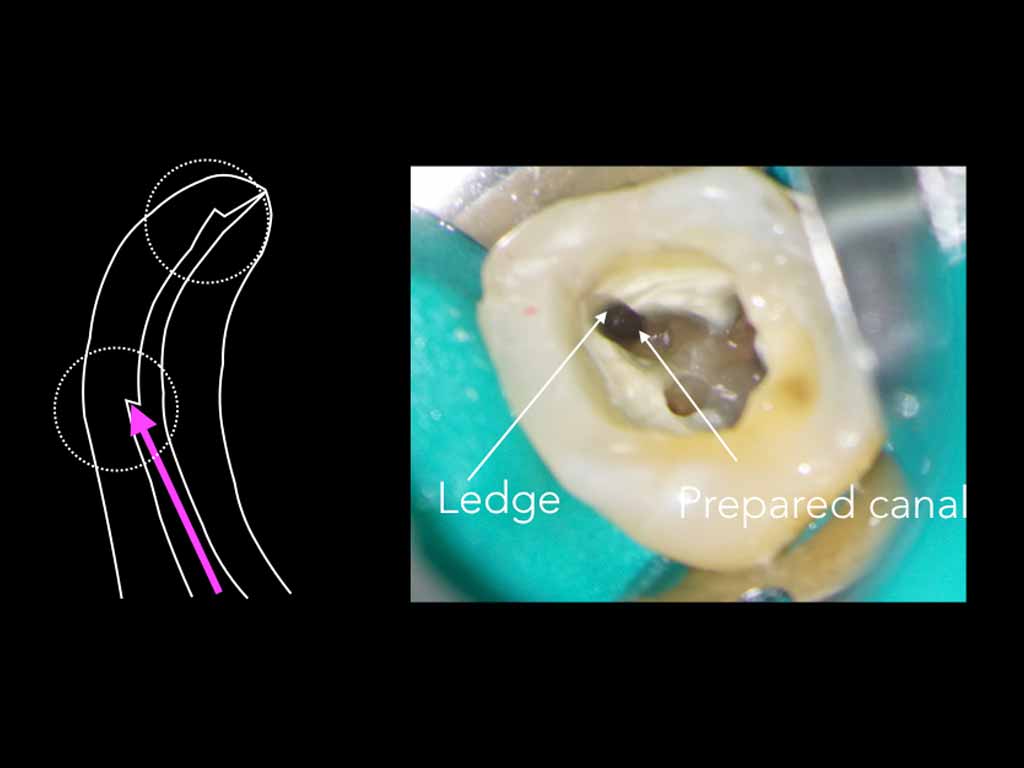John Rhodes presents an interactive, practical and problem-solving solution in endodontics. This time he looks at managing ledges during root canal treatment and tips to avoid creating them in the first place.
Creating ledges
During preparation ledges are inadvertently created and make further instrumentation more difficult as file tips snag in the ledge rather than progressing smoothly to the working length.
Stiff instruments or drills will tend to straighten in the curved root canal. Ledges are most likely on the outer curvature either at the primary curvature or apically.
Gates Glidden burs for example are very efficient cutting instruments and a great way of flaring the coronal part of the root canal during preparation, a brushing action should always be used, cutting on the out-stroke to avoid iatrogenic damage. Ledges can be created apically if the canal has an abrupt curvature and rotary or reciprocating instruments do not have a reproducible glide path to follow.
Figure 1 show that ledges can occur at the point of primary curvature and apically. The ledge is created on the outer curvature and may prevent instruments running smoothly to the working length.

In this clinical case the maxillary right first molar was referred for root canal treatment. The general practitioner had started treatment but was unable to reach the working length in any of the canals.
Looking for ledges
The pre-operative radiograph of the maxillary right first molar (UR6) (Figure 2 below). After preparation of an access cavity, there was evidence of coronal flaring. The canals were not visible and there was no evidence of periapical radiolucency.

This Content is Exclusive to Dentistry Club Members
The Dentistry Club is free to join and lets you access our premium content including cutting edge editorial, leading clinical cases and the biggest stories in dentistry.
Get Started

